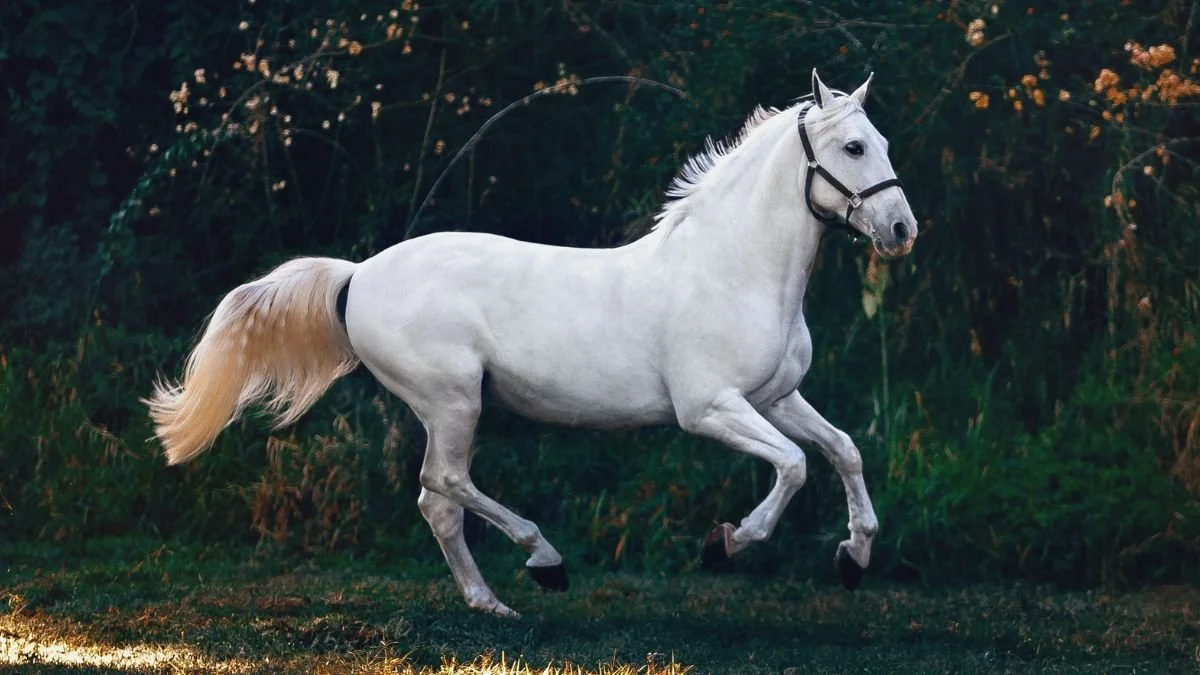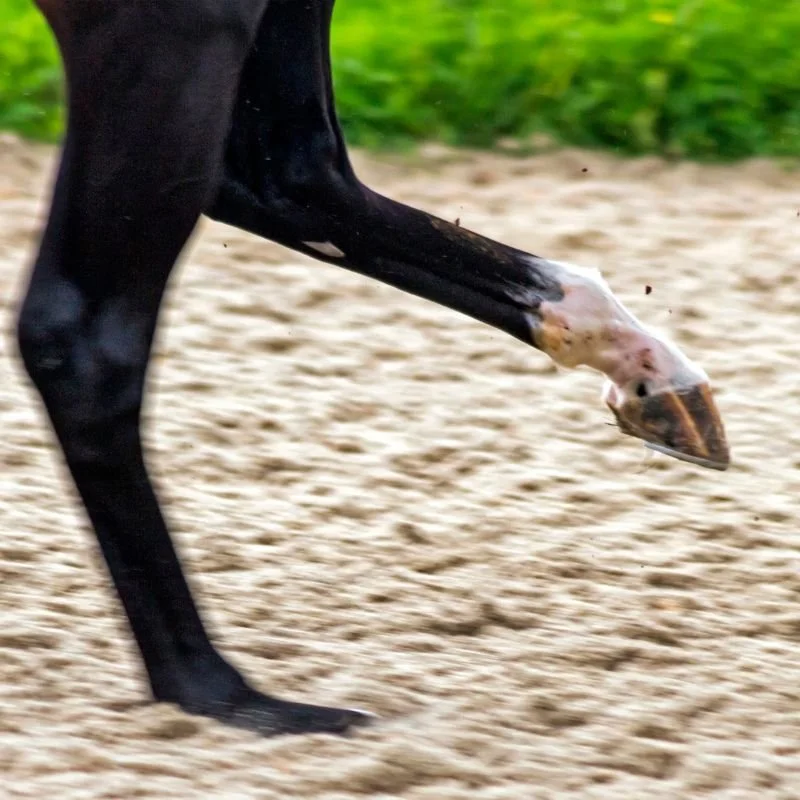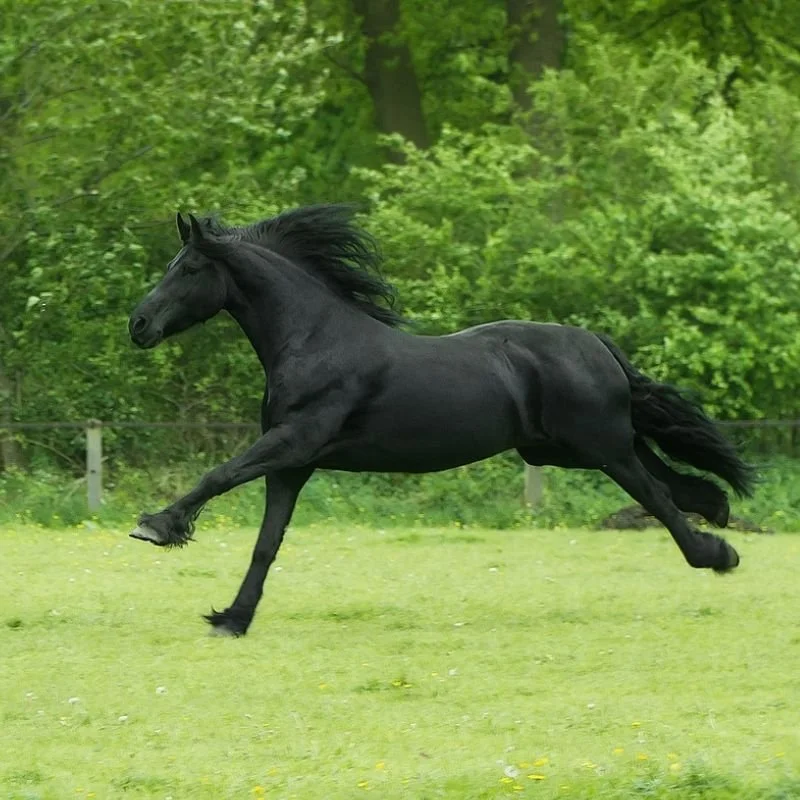Why Reading Your Horse’s Movement is important
Looking at a horse standing still and then watching their movement is like light and shade. Horses give information freely, much more than the rider! This is an observation I have made in my twenty five years experience as a human and equine therapist.
“People have often commented on how hard it must be to work with a horse when there is no verbal communication. But the horse’s communication is even clearer if you listen and observe. ”
Riders often have a preconceived idea of where their issue lies, which is understandable, as that is where they feel pain. However, the area where pain is felt and the root cause are often in entirely different areas. Sometimes, in an attempt to ensure a certain area is addressed a rider will try to alter their movement to sway my opinion (but I see you!).
🔍 Why I Always Watch the Horse Move
When a horse moves, you get a clear representation of them in that moment. And why it’s always my first port of call, it offers clarity and valuable insights.
And the first question I ask myself is: Does this horse need to be referred to a veterinarian?
If not, then I begin my work from there.
🕵️♀️ What the horse's movement can teach us
Looking at a horse is a bit like stepping into an episode of Sherlock Holmes.
Clues start to surface one by one, but if you want to find the real culprit, you’ve got to watch the horse move, otherwise you’re only getting half the story.
Over the years, I’ve developed a subconscious checklist I run through when I assess a horse. There are so many contributing factors that can affect your horse’s movement, here are a few:
Training history
Dental health
Lifestyle
Environment
School surface
Hoof care
Tack fit
And of course… the rider
Movement Reveals the Truth
Static observation gives you some information, but true insight comes from seeing the horse or rider in motion.
It’s here that patterns emerge, imbalances show up, and deeper issues can be uncovered. It’s not just about spotting a problem, it’s about understanding why it’s there.
In the stable, whilst the owner is telling me the case history of the horse.
I am observing how the horse stands.
Their general conformation.
How their muscular development lines up with that.
Looking at their entire body does anything immediately jumps out at me. (believe me, this happens often)
How does their shape correlate with the work the rider is describing to me?
Their general demeanour.
Their stable’s environment.
How the horse interacts with their owner and how the owner interacts with their horse.
Understanding Your Horse's Movement
Be confident in learning about your horse’s movement.
Listen. (I often hear the irregular rhythm of hooves from horses passing by a building I'm working in)
Observe. What’s your horse’s normal?
Be curious. What are their unique quirks and movement patterns?
You spend more time with your horse than anyone else. That makes you their best observer.
When it comes to horses, their movement is black and white.
Despite what some believe, horses don’t “cook up” movement issues to get out of work, and they definitely don’t share avoidance tips with their stablemates!
In fact, when I’m quietly watching a horse, it often turns into something like a confession box. Owners will casually mention important clues that were left out at first.
One Visit I’ll Never Forget...
Years ago, I was called out for what the owner thought was a behavioural issue. But the moment I watched the horse move, it was clear the horse needed to see a veterinarian.
As I stood there quietly, trying to hold back my surprise, the owner added,
"Oh, my trainer says he’s just bridle lame."
Well, the horse wasn’t wearing a bridle. Or being ridden.
I don’t subscribe to the concept of bridle lameness, this wasn’t behavioural, it was physical. And a veterinary assessment followed. Listen to your gut if your trainer is telling you to ride through something and it doesn’t feel right it isnt! Riding through problems that constantly arise is making them worse, there is a problem.
A Lifetime of Exploring Movement
I’ve been captivated by movement since I was a child, and I love viewing it from multiple angles.
As a restorative exercise specialist, I sometimes have to tune out the rider or owner movement. As they can get somewhat distracting! (I’m not looking… well, maybe just a little 😄)
Why your horse’s Movement Matters
Any equine professional assessing your horse should observe them in motion.
While there are a few exceptions in veterinary contexts, but so much can be missed without seeing how the horse actually moves.
Soundness is an Art
Horses aren’t born straight or ambidextrous. Every Horse is an Individual, Just like us, horses come with unique physical nuances.
Their posture develops over time, shaped by how they use their bodies, their movement opportunities, where they move, how much movement they get, and their conformation.
Our job? To enhance and support that movement through thoughtful, considerate training and lifestyle.
Think of your horse like an F1 car (and this means every breed!) Just like an F1 car you want a good team around you the team to fine-tune, maintain, and prevent injury or premature wear and tear and have your horse’s best interests at heart.
Learning to Read Your Horse’s Movement
Does the movement flow through the body - Or are there areas where their gait looks restricted, things slow down in the movement of that area?
Listen to the footfalls - Does one appear heavier or lighter or do you hear the foot drag a little?
Does - One or more leg look stiffer or does the leg move slightly inwards?
Where does the horse like to carry their head - High, low, to the side or another nuianced place.
Don’t Underestimate What You Notice
I often see professionals who encourage their clients to rely on them. Many horse owners doubt their own observations, especially if they haven’t had formal training in anatomy.
But here’s the thing: your insight matters.
I've met novice owners who’ve astounded me with what they notice and how they relay it back to me.
And on the flip side? I’ve met some experienced riders who’ve surprised me in ways I wish they hadn’t!
Groundwork; the basics you can never know them enough
I absolutely love groundwork it's a perfect time to train your eye. There's something incredibly rewarding about working with an owner to rehabilitate a horse, helping them with the skills to help their horse.
I remember one owner whose horse had suffered a spinal fracture and was returning to ridden work after groundwork rehabilitation. The owner said the horse had never felt so good in canter. Small details truly make a difference.
I cannot emphasize enough how crucial the basics are for both horse and rider. Knowing your horse’s movement is an incredibly valuable skill. The more you tune in, the more you’ll notice even the most subtle changes. And It costs you nothing!
✅ Takeaways
There are many factors that affect your horse’s movement.
Your horse is an individual. Just like us, horses come with unique physical nuances.
How your horse uses their body has a large influence on their posture.
Use your senses, listen, and observe.
Noone knows your horse better than you, be confident, knowing your horse’s movement is a really vaulable asset in their care.








